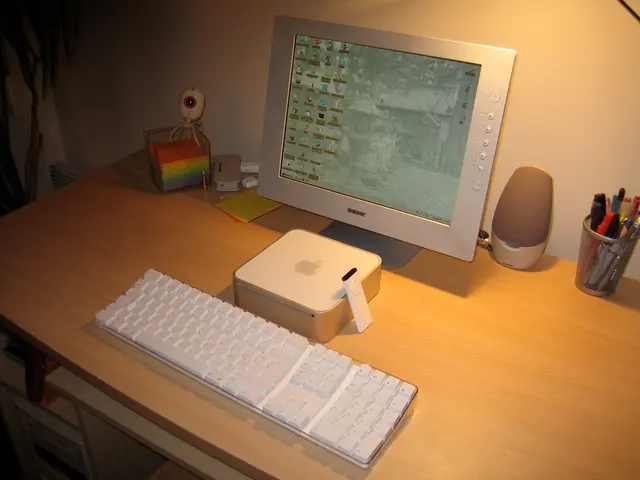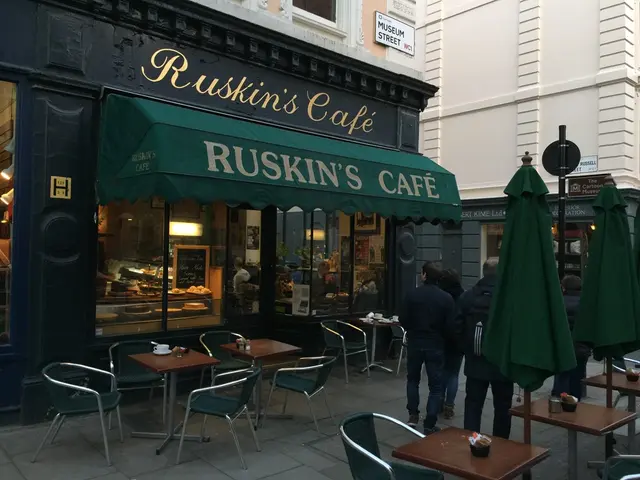Exploring Practical Approaches to Overcome the Plastic Pollution Dilemma
In the ongoing battle against pollution, two significant fronts are being explored: the role of green rooftops in microplastic retention and the effectiveness of plastic bag policies in reducing plastic litter.
Researchers aim to enhance our understanding of microplastic transport in urban environments, with a focus on preventing the transfer of atmospheric microplastic pollution into aquatic ecosystems. To do this, they have created laboratory-scaled green roofs, mimicking real-world conditions with shallow plastic bins, filters, drainage materials, soil, and plantings.
The study, conducted with two species commonly found on Shanghai green roofs, Rhodiola rosea and Sedum lineare, has revealed promising results. Green rooftops intercept microplastics at an impressive rate of 97.5% efficiency for trapping microplastics from atmospheric deposition. Most microplastics are retained in the planting soil layer, with retention rates ranging from 66-92%. However, fibres are more challenging to capture than fragments in green rooftop systems.
Higher rainfall intensities slightly increase the interception efficiency of green rooftops, offering a potential boost in their microplastic-retaining capabilities.
Meanwhile, a June 2025 study published in *Science* by Anna Papp and Kimberly L. Oremus provides significant insights into the effectiveness of plastic bag policies in reducing plastic litter and their impact on urban environments. The study found that plastic bag policies lead to a decrease of 25 to 47% in plastic bags as a share of total items collected relative to areas without such policies.
These policies have similar effects along coasts, rivers, and lakes, with suggestions of larger impacts along lakes. The greatest impact is observed in areas where plastic bag litter is most prevalent. State-level policies are more effective than local ones, indicating that broader regulatory frameworks can have a more significant impact on reducing plastic bag litter. There is no evidence of rebound or spillover effects, meaning that the reduction in plastic bag litter is not offset by increases in other types of plastic waste or in neighboring areas.
The findings suggest that plastic bag policies have been effective in limiting, but not eliminating, shoreline plastic bag debris. The study also suggests a reduction in the presence of entangled animals in areas with plastic bag policies, although the evidence for this is less precise.
The effectiveness of plastic bag policies highlights the potential for regulatory measures to mitigate plastic pollution. This study underscores the importance of such policies in managing plastic waste and supports ongoing efforts to address plastic pollution globally, including the development of a global plastics treaty.
While the study focuses on plastic bags, it implies that similar policies could be effective for other types of single-use plastics, supporting the idea of comprehensive solutions to plastic pollution. Additionally, the efficacy of surface runoff treatment facilities, such as bioretention ponds, vegetated swales, and constructed wetlands, is high in capturing microplastics horizontally.
Green rooftops and plastic bag policies, then, offer a dual approach to combating microplastic pollution, with each strategy providing unique benefits and potential for improvement. As research continues, these findings offer hope for a cleaner, greener future.
- Solar power could potentially aid in powering research facilities that study microplastic transport and the efficacy of green rooftops and plastic bag policies.
- A monthly newsletter discussing the impact of green living choices, such as the use of solar power and sustainable materials, could be an informative addition to environmental-science podcasts.
- In light of the promising results of the study on green rooftops, policy-makers might consider implementing sustainable-living initiatives, like incentivizing home-and-garden projects with solar panels and green roofs.
- For those interested in the environment, staying updated on the progress of plastic bag policies and green rooftop research could be an essential part of a comprehensive lifestyle dedicated to combating climate-change.
- Furthermore, the success of surface runoff treatment facilities in capturing microplastics evidence the importance of incorporating environment-friendly infrastructure, like green rooftops and bioretention ponds, in urban planning policies for a more sustainable future.




